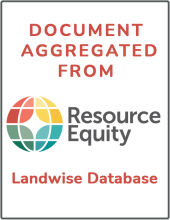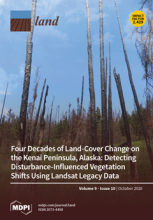Land Library
Bienvenue dans la bibliothèque du Land Portal. Explorez notre vaste collection de ressources en libre accès (plus de 74 000), comprenant des rapports, des articles scientifiques, des articles de recherche, des publications évaluées par des pairs, des documents juridiques, des vidéos et bien plus encore.
/ library resources
Showing items 1 through 9 of 129.This article analyses the contribution to local development by women workers in the fruit- and vegetable-handling sector in Almería (Spain) over the last five years (2015–2019). It is a continuation of research carried out during the period 2000–2014.
Post-Soviet reforms in Kyrgyzstan during the 1990s and early 2000s included the allocation of land for long time use and eventual ownership to residents. 75% of arable land, including over 1 million hectares of agriculture land was distributed during this period.
The findings of this study demonstrate that the despite the bouquet of land laws and other land reforms that have been put in place to make it easier for women to access land rights, both the formal and informal systems remain fraught with multiple extra-legal obstacles in the form of personal (f
Women and youths encounter problems with access to land, as well as securing tenure in land resources [...]
We set out to unveil gender inequality with respect to women’s access to family land following the surge in tree-planting in selected villages in the Southern Highlands of Tanzania.
Although land forms the basis for marginal livelihoods in Sub-Saharan Africa, the asset is more strategic for women as they usually hold derived and dependent rights to land in customary tenure areas.
An increasing number of African States are recognizing customary land tenure. Yet, there is a lack of research on how community rights are recognized in legal and policy frameworks, how they are implemented in practice, and how to include marginalized groups.
Women are an underappreciated economic force who, when empowered by association with a female organization, can be a catalyst for development.
This article reviews the invisibility and the recognition of rural female work in the Patagonian region of Argentina over time.







